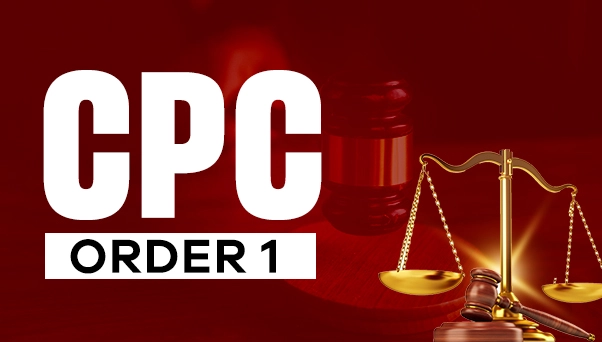Legal systems require established guidelines, and India's Civil Procedure Code of 1908 serves as a vital framework. Among its provisions, Order 1 emerges as a significant component, governing the parties involved in civil suits and their representation. Let's delve into the intricacies of Order 1 and comprehend its pivotal role in shaping legal proceedings within the nation. By understanding this crucial aspect of civil procedure, we can grasp the intricate dynamics underpinning the judicial process.
CPC Order 1.
Civil litigation requires proper representation for all parties with significant interests to resolve conflicts effectively. Rule 1 governs the inclusion, exclusion, and improper joinder of parties. Its flexibility accommodates the intricacies of civil cases. It ensures no major stakeholder is overlooked, allowing comprehensive dispute resolution.
Key Parts of Order 1
Rule 1 talks about who can be plaintiffs together. It lets many people join as plaintiffs if their claim comes from the same thing. This could be one act or transaction, or a series. But there needs to be a common legal or factual question for all plaintiffs.
Rule 2 permits courts to split trials if needed. This power simplifies proceedings and avoids delays. Separate trials can streamline case management.
Rule 3 allows joining multiple defendants. These defendants face claims jointly, severally, or in the alternative. Claims arise from the same act or transaction. This comprehensive approach resolves multiple disputes together.
Rule 4 helps courts give fair rulings. They can rule for or against one or more joint parties. The decision depends on each party's role in the case.
Rule 5 emphasizes that defendants don't need a stake in every remedy sought.
This principle underlines that plaintiffs can pursue varied remedies against different defendants within one lawsuit. However, the claims must relate to the same event or transaction, involving shared legal or factual questions. Despite defendants' differing interests, the suit's cohesiveness allows combining demands if they meet this commonality requirement.
Rule 6 allows a plaintiff to unite multiple claims against the same defendant or various defendants in one suit.
The plaintiff can pursue claims jointly, separately, or as alternatives if they share common legal or factual issues. However, the joinder is subject to court jurisdiction and statutory limitations for trial convenience. The rule enables consolidation of related causes to streamline resolution.
Rule 7 deals with raising objections concerning improper joining of parties.
This rule enables parties to object if they believe others have been improperly joined in the legal proceedings. However, such objections must be raised promptly, typically when filing the initial defense. The purpose is to prevent parties from strategically delaying by raising procedural issues late in the process.
A single person might represent all with the same stake.
Rule 8 covers instances where many people share an interest in a legal case. In these situations, one or more plaintiffs can file suit or be sued to benefit everyone similarly situated. This applies to class actions or representative lawsuits, where including every individual would prove impractical. However, the court must approve such suits. Judgments or orders bind all represented parties, not just the named plaintiffs or defendants.
Rule 9 is key. It says a case can't fail due to wrong parties being included or left out. The court can still make a decision about the parties involved.
The importance of Order 1
The rules of Order 1 help to prevent multiple lawsuits on the same issue. It lets all relevant parties join the case together. This ensures the dispute gets fully resolved. Most importantly, it safeguards everyone's interests, preventing future legal action. Furthermore, it upholds fairness as no one lacks a remedy due to technicalities.
Conclusion
CPC Order 1 is vital for civil lawsuits in India. It sets rules about who can be involved. These guidelines help resolve disputes fairly and effectively. As civil cases change over time, Order 1's principles stay important. They guide courts and people to just, final outcomes.
